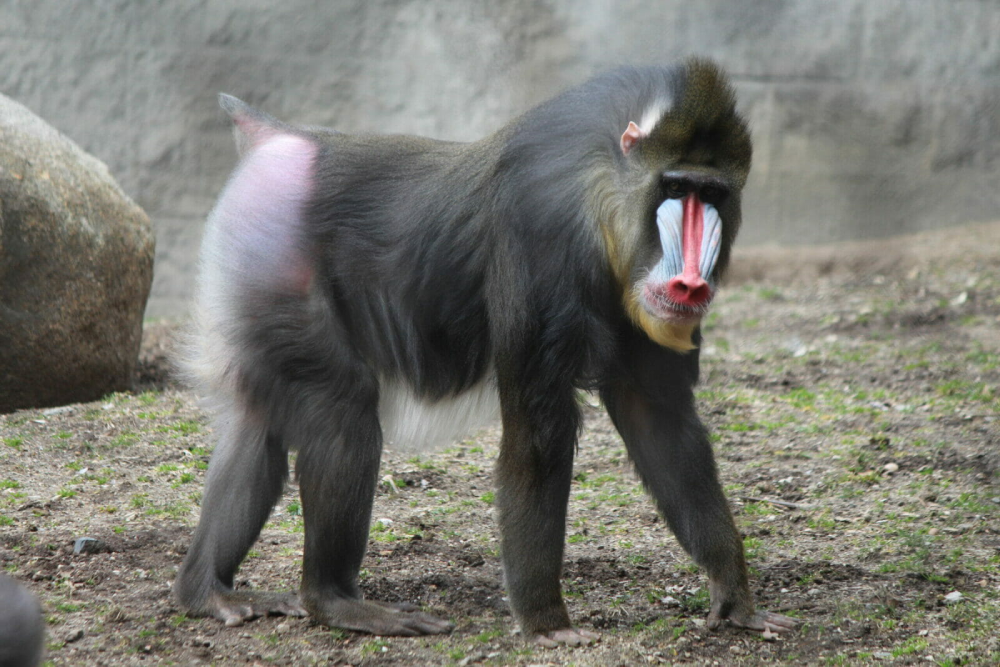Hidden deep within the lush rainforests of equatorial Africa, a creature of remarkable beauty and mystery resides. With its vibrant colors, expressive face, and complex social structures, the mandrill (Mandrillus sphinx) captivates the imagination of all who encounter it. In this comprehensive exploration, we delve into the world of mandrills, uncovering their biology, behavior, ecological significance, and the challenges they face in an ever-changing environment.
Taxonomy and Distribution
Mandrills belong to the Cercopithecidae family, commonly known as the Old World monkeys, which includes baboons, macaques, and guenons. Within this family, mandrills are classified into the genus Mandrillus, alongside the closely related drill (Mandrillus leucophaeus). Mandrills are native to the dense rainforests of central-western Africa, specifically inhabiting Cameroon, Equatorial Guinea, Gabon, and Congo.
Physical Characteristics
Renowned for their striking appearance, mandrills are among the most colorful mammals in the animal kingdom. Males sport a vivid palette of blue and red on their faces and rumps, accompanied by golden fur covering the rest of their bodies. Females and juveniles exhibit more subdued hues, with olive-green fur and less pronounced facial markings. The colorful display is not merely aesthetic; it plays a crucial role in social signaling within the troop.

Social Structure and Behavior
Mandrills live in large, multi-male, multi-female groups known as troops, consisting of up to several hundred individuals. Within these troops, a strict hierarchy governed by age, size, and social status determines access to resources and breeding opportunities. Dominance among males is established through displays of aggression, vocalizations, and colorful facial markings. Females also exhibit a hierarchical structure, with older and larger individuals typically holding higher ranks.
Communication among mandrills is complex and multifaceted, involving vocalizations, facial expressions, and body postures. Grunts, barks, and roars convey different messages, ranging from warning calls to expressions of submission or aggression. Facial expressions, particularly the vivid colors of the male’s face, serve as visual cues in social interactions and mate selection.
Feeding Habits and Ecology
As omnivores, mandrills have a diverse diet consisting of fruits, seeds, leaves, insects, and small vertebrates. Their foraging behavior plays a crucial role in seed dispersal and forest regeneration, making them essential components of their ecosystem. Mandrills are primarily arboreal but will occasionally venture to the forest floor in search of food or water.
Reproduction and Life Cycle
Breeding in mandrills typically occurs throughout the year, although there may be seasonal peaks in mating activity. Males compete for access to receptive females, engaging in aggressive displays and vocalizations to assert dominance. After a gestation period of approximately six months, females give birth to a single offspring. Infant mandrills are nursed by their mothers and remain dependent for several months before gradually becoming more independent. Sexual maturity is reached between three to five years of age, after which individuals may disperse from their natal troop to join or establish new groups.
Conservation Status and Threats
Despite their charismatic appeal, mandrills face numerous threats to their survival, primarily due to habitat loss, hunting, and disease. Deforestation, driven by logging, agriculture, and human settlement, has resulted in the fragmentation and degradation of their forest habitats. Additionally, mandrills are hunted for bushmeat and traditional medicine, further exacerbating population declines. Infectious diseases, such as Ebola and simian immunodeficiency virus (SIV), pose significant threats to mandrill populations, with outbreaks leading to mass mortality events.
Efforts to conserve mandrills and their habitats are underway, including the establishment of protected areas, community-based conservation initiatives, and research programs aimed at understanding their ecology and behavior. However, more comprehensive conservation strategies are needed to address the complex interplay of factors driving their decline.
Conclusion
In the heart of Africa’s rainforests, the mandrill reigns as a symbol of resilience, adaptability, and biodiversity. With its vibrant colors, intricate social structures, and vital ecological role, this enigmatic primate continues to captivate the hearts and minds of researchers, conservationists, and nature enthusiasts worldwide. As we strive to protect the natural wonders of our planet, let us not forget the majestic mandrill and the irreplaceable role it plays in maintaining the rich tapestry of life in the African wilderness.









